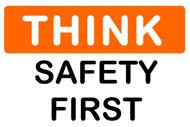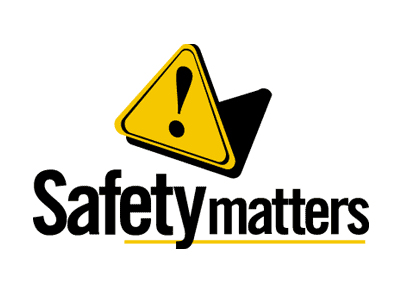 Postdoc Coordinator Kristene “Tina” Henne (CEPA) recently held a Safety Q&A Discussion with Will Brocker (EESA), a Safety Professional at Argonne, to gain insight into his position as an ALD ESH/QA Coordinator.
Postdoc Coordinator Kristene “Tina” Henne (CEPA) recently held a Safety Q&A Discussion with Will Brocker (EESA), a Safety Professional at Argonne, to gain insight into his position as an ALD ESH/QA Coordinator.
Will has been active with the Postdoc Community originally through the Near Hit Program, which later became the CSI-SPU (Commitment to Safety Innovation-Special Postdoc Unit) Program to foster a safety dialogue among postdocs. Will regularly attends the postdoc quarterly meeting and routinely discusses safety issues and ideas with the Postdoc Program Office.
 Q. Tell us about yourself Will.
Q. Tell us about yourself Will.
A. I have been at Argonne for 17 years. I hold a Bachelors of Science in Environmental and Public Health from the University of Wisconsin-Eau Claire and a Master of Science in Industrial Hygiene with a Minor in Biometry, both from the University of Minnesota. I am a Certified Industrial Hygienist (CIH), Certified Safety Professional (CSP) and have been a Health and Safety Professional for more than 35 years. My career spans private industry and U.S. Department of Energy contractor experience.
Q. What are your major roles and responsibilities as an ALD ESH/QA Coordinator?
A. I support directorate employees, advise the ALD and Division Directors, and help enable ESH coordinators to succeed. I wear many safety hats and serve on numerous Safety Committees, participate in special reviews, advise ESQ Division Director Roby Enge and ESQ staff, and review and comment on ESH LMS PROCs.
Q. What are your challenges?
A. The challenge is to efficiently integrate and incorporate safety every day into our research mission. This must be performed in a way that is competitive, meets the cost, schedule and performance needs of our clients and produces the research safely. Another challenge is much of what we do is new, so as safety professionals we must be creative and work closely with our researchers to understand the hazards so we can develop adequate controls that can be implemented.
Q. How do you interact with various stakeholders to fulfill your numerous roles, accomplish your goals and overcome your challenges?
A. I accomplish my goals and fulfill my roles through frequent interaction with division ESH coordinators to maintain awareness of employee and staff ESH needs and issues. I make sure safety needs are met, issues are addressed and safety is at the start and end of every day. Having a routine focus on safety and participating in facility safety inspections and walkthroughs makes safety front and center in our laboratory research. Going into laboratories and work areas also helps me learn the researcher’s perspective. I take part in observation conversations, staff meetings, walkthroughs, fact-findings and share safety information and needs among safety partners.
Q: In your experience, what are the main challenges in ensuring a safe work environment?
A. For all employees, including researchers, there are many challenges to ensuring a safe work environment. The primary challenge is that the nature of our work is seldom routine and as a result the work environment, equipment and workers are frequently changing. Anticipating and detecting changes that may adversely affect safety is accomplished by everyone from workers and supervisors to division and directorate management and staff to Argonne oversight organizations. It is a team effort.
To overcome these challenges we need to constantly assess the following:
- The work environment: to ensure new hazards are not present and necessary controls are in place.
- The planned work: to ensure it is within the scope of the applicable work planning and control document.
- The worker’s training and experience: to ensure they are qualified to do the planned work.
On a daily basis our workers and supervisors perform these important assessments and as necessary make adjustments to ensure our research is conducted safely. Division and directorate staff periodically conduct facility safety inspections, as well as work planning and control document reviews to ensure hazards are identified, analyzed and are adequately controlled. At the Argonne level, independent assessments and surveillances are occasionally conducted to ensure controls are in place and procedures are implemented. This approach to planning our work and detecting changes enables research to be performed efficiently and safely.
Q: How does safety affect the overall mission? 
A. Prior to joining Argonne I worked for two corporations that were highly motivated to make a profit. Both companies eventually developed processes and work practices that implemented the functions and principles of Integrated Safety Management (ISM) into all aspects of the organization, not just safety.
It was interesting to see how through continuous improvements in organizational and safety performance the companies became more profitable and were eventually purchased by larger corporations. A healthy safety culture was the catalyst for this success.
At Argonne, making a profit isn’t our research mission. However, obtaining research funding is competitive and important for us to achieve our mission. It is clear that organizations and institutions that fund research want to get the most research for their investment. Having good safety performance, as well as a healthy, vibrant safety culture, helps us win these crucial new grants and re-new existing program funding so we can accomplish our mission. When we implement the ISM functions and principles on a daily basis we place Argonne out front as a successful model to secure research grants and achieve research excellence. By planning our work, identifying and analyzing hazards, developing and implementing controls, working within controls and using feedback has resulted in more grant awards, more high quality mission-driven research, as well as improved safety performance, for the laboratory as a whole. Safety is the cornerstone in achieving our mission.
Q. What can postdocs do to prepare for the next phase in their careers in which they might be responsible for ensuring a safe work environment for students or group members, for instance?
My advice to postdocs is to learn as much as they can about Argonne’s approach to developing and implementing safety programs, as well as our safety culture. Get to know the safety professionals at Argonne, the safety processes and the procedures. External companies have an approach to safety that is consistent to Argonne’s. As such, it will be easy for postdocs to transition into such organizations. Should postdocs decide to pursue careers in academia, they can use what they learn at Argonne to help drive a long overdue safety culture change. Due to the number of serious accidents in academic laboratories that have occurred and continue to occur on a daily basis, the public through court cases and the Chemical Safety Board through regulators are putting pressure on academic institutions and school districts to improve safety in laboratories.
Q. I heard the reporting and compliance standards can be very strict in industry. Can you comment on how industry instills a safety culture and how it differs, if at all, from that of Argonne?
A. Companies are under the Occupational Safety and Health Administration (OSHA) regulation and OSHA ensures compliance through inspections. In reality most companies have not had an OSHA inspection due to a lack of resources. So, fear of regulatory non-compliance does not motivate senior management to embrace safety. As mentioned previously, most companies recognize that safety and profitability are interrelated. Companies with poor safety culture and poor safety performance are usually not very profitable and eventually go out of business. Companies that are profitable have a good safety culture and good safety performance. In such companies, senior management ensures that safety is part of the organization’s culture and the way they do work. Argonne is similar, except that senior management ensures research and safety are intertwined to enhance our organizational culture so that we can achieve our research mission safely.
Q. Any final thoughts on how postdocs can help lead a safety culture at the laboratory — as opposed to merely fulfilling requirements?
There are many ways to get involved and learn more about safety at Argonne.
Here are a few:
- Develop a working relationship with your division’s ESH Coordinator or ALD’s ESH/QA Representative. They enjoy learning about research activities and challenges, and are willing to have a dialogue about safety.
- Join a safety committee. There are many division and laboratory level safety committees that would welcome a postdoc’s input.
- Volunteer to serve as a member of a Work Planning and Control (WPC) Review Team.
- Participate in ISM month activities

